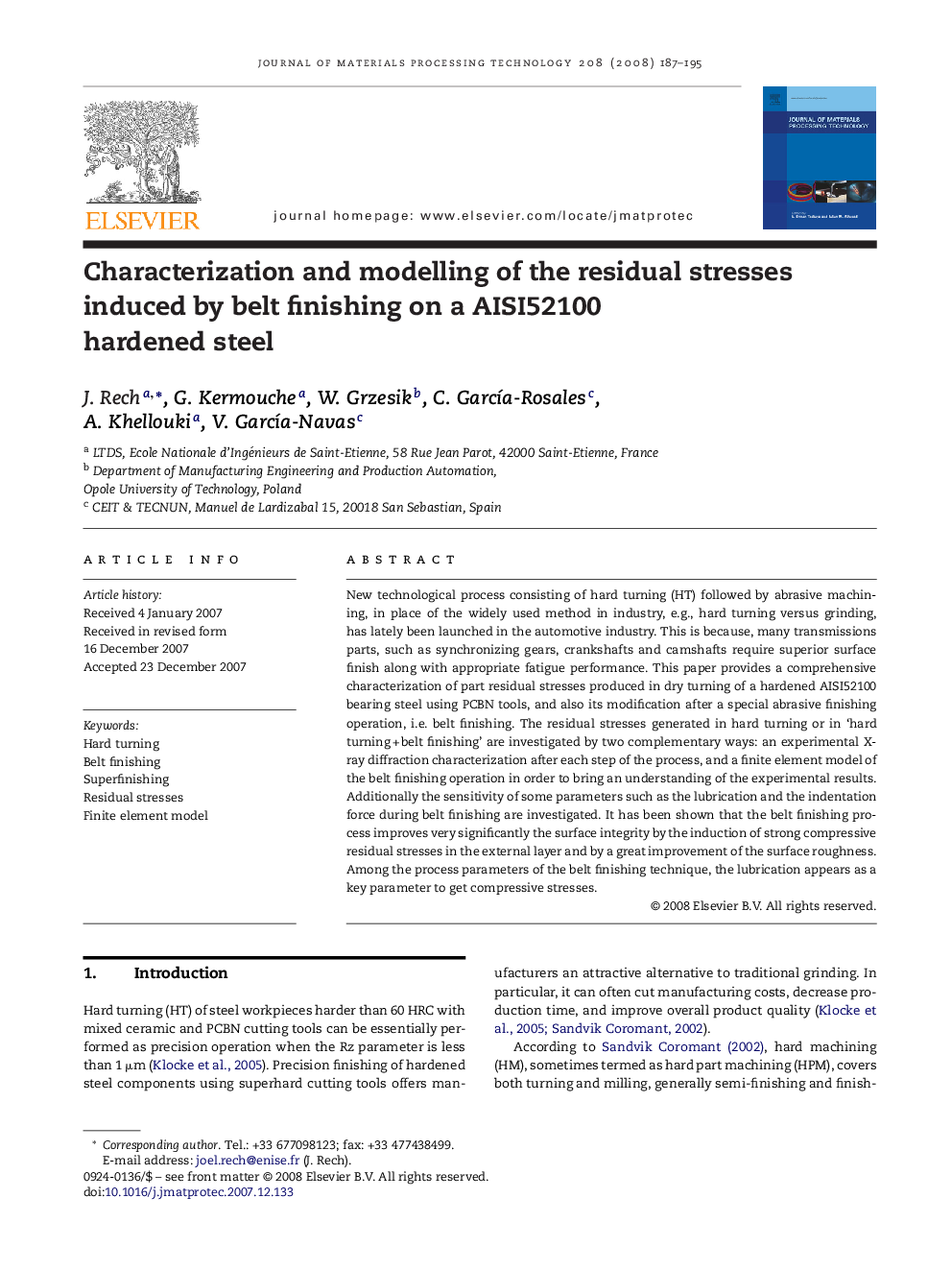| Article ID | Journal | Published Year | Pages | File Type |
|---|---|---|---|---|
| 795148 | Journal of Materials Processing Technology | 2008 | 9 Pages |
New technological process consisting of hard turning (HT) followed by abrasive machining, in place of the widely used method in industry, e.g., hard turning versus grinding, has lately been launched in the automotive industry. This is because, many transmissions parts, such as synchronizing gears, crankshafts and camshafts require superior surface finish along with appropriate fatigue performance. This paper provides a comprehensive characterization of part residual stresses produced in dry turning of a hardened AISI52100 bearing steel using PCBN tools, and also its modification after a special abrasive finishing operation, i.e. belt finishing. The residual stresses generated in hard turning or in ‘hard turning + belt finishing’ are investigated by two complementary ways: an experimental X-ray diffraction characterization after each step of the process, and a finite element model of the belt finishing operation in order to bring an understanding of the experimental results. Additionally the sensitivity of some parameters such as the lubrication and the indentation force during belt finishing are investigated. It has been shown that the belt finishing process improves very significantly the surface integrity by the induction of strong compressive residual stresses in the external layer and by a great improvement of the surface roughness. Among the process parameters of the belt finishing technique, the lubrication appears as a key parameter to get compressive stresses.
